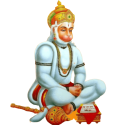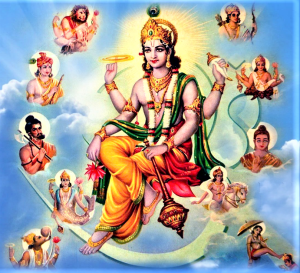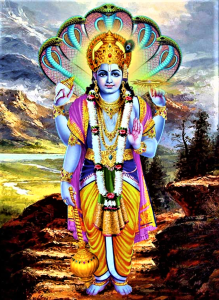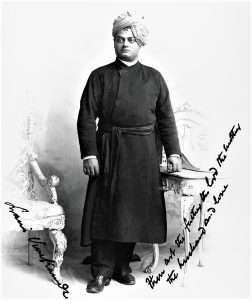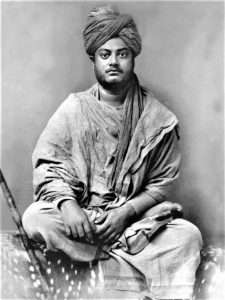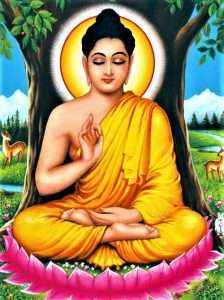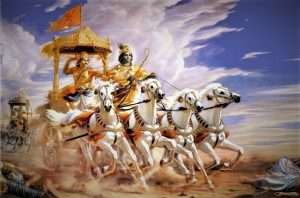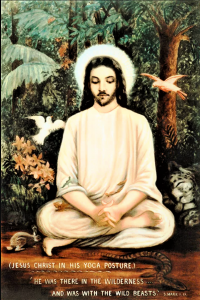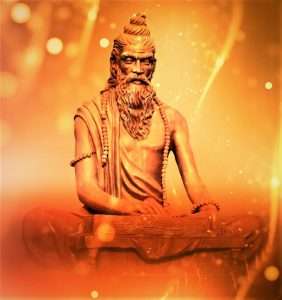Raja Yoga
The Sanskrit word “Raj” means secret. In the perspective of Yoga and spirituality, it means the secret behind all the superhuman phenomenon which Yogis and devotees of God have been able to reflect. Therefore, Raja Yoga is considered the scientific explanation of all religious and spiritual phenomenon. Some authors mean the word Raj as higher, royal or kingly according to which Raja Yoga is also called Higher or Royal form of Yoga. Some authors address Raja Yoga as Ashtanga Yoga (Ashta – eight, Anga – limbs) because of its eight limbs. Nevertheless, we accept both interpretations as relevant.
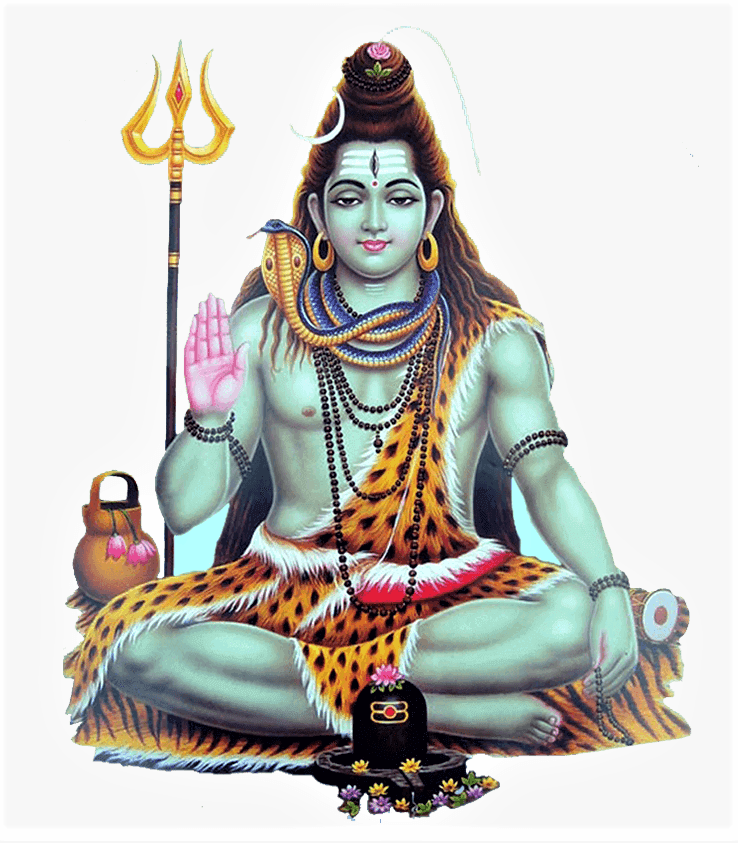
Raja Yoga – Traditionally Raja Yoga is a very ancient branch of Yoga which deals with mind, mental behaviours, patterns and methods of control for enlightenment. There are references to Raja Yoga in ancient holy texts like Kurma Purana, Hatha Yoga Pradipika, Yogatattva Upanishad, Dattatreyayogashastra, Shiva Samhita and so on. Bhagavad Gita (9.2) also talks about the term “Raja Vidya Raja Guhyam” which means higher, confidential and secret knowledge. The term “Raja Yoga” became very popular during 19th century when Swami Vivekananda named His commentary on Yoga Sutras of Patanjali as Raja Yoga. Since then, most people consider Yoga Sutra of Patanjali as Raja Yoga. But Raja Yoga has a very long antecedent. That’s why Swami Vivekananda made the reference from Kurma Purana in his commentary on Yoga Sutra of Patanjali. If we study Raja Yoga from other different texts of the past and Yoga Sutra of Patanjali, then we will find so many similarities with some differences in terms of details of topics. However, at all the places Raja Yoga deals with human mind, its limitations, modifications, methods of control, mental powers and enlightenment. Swami Vivekananda defines Raja Yoga as the science which puts before humanity a practical and scientifically worked out method of reaching the truth. The instrument is the mind itself. The powers of mind are like the rays of light dissipated; when they are concentrated, they illumine. This is our only means of knowledge in Raja Yoga.
Kurma Purana – The Kurma Purana is one of the eighteen Purana in Hinduism. The Purana is named after the Tortoise incarnation of God Vishnu. Traditionally it contains 17000 verses. There are differences in opinions about the structure of Kurma Purana as it has different versions but according to some of them, it consists of two parts – The Purva – Vibhaga (Former part) and The Uttar – Vibhaga (Latter part). Both parts of the Purana deals with many different kinds of interesting topics. They are –
Purva – Vibhaga – Description of Kurma Purana, varnashram, various incarnations, dwarf incarnation of God, Ikshvaku clan, Pururava clan, incarnation of God Rama and God Krishna, description of four Yuga – Satya, Treta, Dwapada and Kali Yuga, Greatness of Varanasi, Lingas, Prayag, Yamuna and so on.
Uttar – Vibhaga – Yoga of unexpressed knowledge, appearance of Rudra; God Shiva during Tandava, Metaphysical knowledge. Raja Yoga; Ashtanga Yoga, duties of a celibate, edible and non-edible things, regular rituals, duties of a retired and ascetic, expiation, importance of different places of pilgrimage and so on.
In Kurma Purana Uttar – Vibhaga, chapter 11, we find detailed description of Raja Yoga including eight limbs of Yoga which is very similar to Yoga Sutra of Patanjali.
Raja Yoga in Kurma Purana
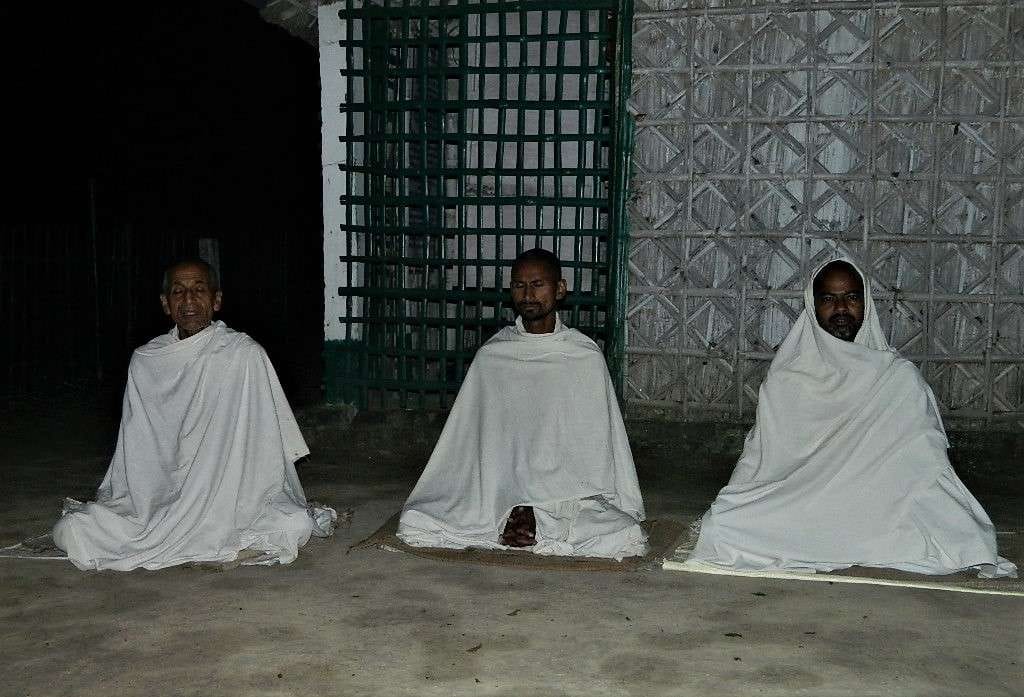
The second part of Kurma Purana, chapter 11 entitled “Ishwara Gita” describes topics in detail which is similar to eight limbs of Yoga Sutra of Patanjali. This forms the essence of Raja Yoga. At the same time at various places in Kurma Purana we come across many topics same as in Yoga Sutra of Patanjali such as Kleshas (Afflictions), God and His six potencies (omniscience, joy of satiety, eternal knowledge, independence, ever-inexhaustible power and infinite strength), Aum and so on. Chapter 11 of the second part of Kurma Purana is more relevant in terms of the description of eight limbs of Yoga similar to Yoga Sutra of Patanjali. This is also called the Path of liberation of the individual soul from bondage. Kurma Purana (2.11.1,2) begins with the term “Ishwara Uvacha” (God says). In Kurma Purana (2.11) God means God Shiva and the instruction is given by God Shiva. God says that “henceforth, I shall explain a Yoga which is very difficult to attain and whereby a devotee visualizes the Atman (Soul); the Isvara (God) like the sun. The fire of Yoga quickly burns the entire cage of sins thereby arises the knowledge which accords the attainment of freedom from Samsara (mortal world).
Yoga in Kurma Purana is of two kinds (2.11.5) –
- Abhava Yoga (Void Yoga) – Where one’s own soul is meditated upon as void; zero and devoid of all false appearances whereby one realizes one’s own self.
- Mahayoga (the great Yoga) – Where one sees one’s own self as immaculate, eternal bliss and identical with God. It is the greatest Yoga.
The Yoga in which a liberated soul perceives the whole universe as one with God, is considered the greatest of all Yoga.
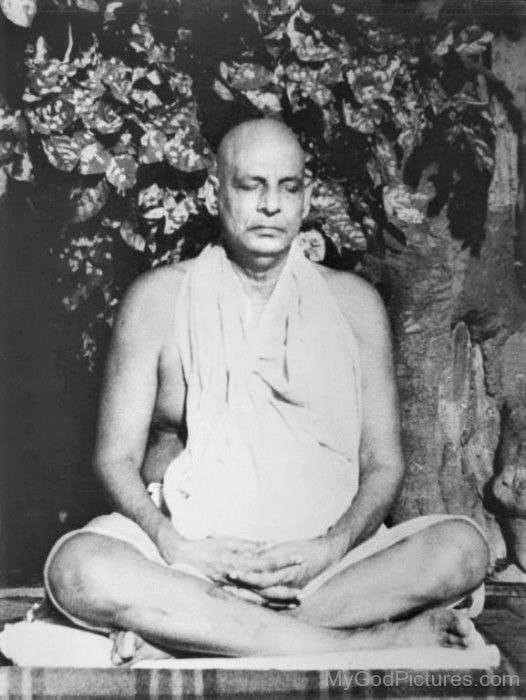
Eight Limbs of Raja Yoga (2.11.11) – The followings are the essential adjuncts of Raja Yoga – Pranayama (Control of Prana), Dhyana (Meditation), Pratyahara (Withdrawal of sense-organs), Dharana (Concentration), Samadhi (Trance), Yama (Moral Control), Niyama (Restraint and observance) and Asana (Posture).
1. Yama (2.11.13) – Ahimsa (Non-injury), Satya (Truth), Asteya (Non-stealing), Brahmacharya (Celibacy) and Aparigraha (Non-possession). They purify the mind.
- Ahimsa (2.11.14,15) – It is not causing any distress to any being at any time in action, mind and words. There is no greater Dharma (action) than Ahimsa; there is nothing more pleasant than Ahimsa.
- Satya (2.11.16) – It is the act of stating facts precisely. One can obtain everything through Satya and everything is founded on Satya.
- Asteya (2.11.17) – It means restraining oneself from stealing or taking by force another person’s wealth or property. It is a means of acquiring Dharma (virtue).
- Brahmacharya (2.11.18) – It is physically, mentally and orally refraining from copulation in all stages, at all times and in all places.
- Aparigraha (2.11.19) – It is willingly non-receiving of gifts even during adversity. One should maintain it with effort.
2. Niyama (2.11.20) – Tapas (Penance), Svadhyaya (Study of Scriptures), Santosha (Contentment), Saucha (purity), Ishvara-Pujanam (Worship of God). These are the bestowers of perfection in Yoga.
- Tapas (2.11.21) – It is ancient means of fasts and religious vows like Paraka, Kriccha, Candrayana etc. through which body is dried out. It means also some disciplines like pilgrimage, taking bath in holy river on daily basis, eating special food like boiled food and so on.
- Svadhayaya (2.11.22) – It is Japa (chanting) of the hymns of Vedas, Satarudriya (Vaj. Samhita XVL 1-66), Pranava (AUM) etc. It develops Sattva Guna in humans.
Kinds of Svadhayaya (2.11.23) – Vachika (Verbal), Upanshu (Whisper) and Manasa (Mental). The knowers of the Vedas say that the latter ones are better than the former ones.
Vachika (2.11.24) – It is audible chanting, recitation or study of Vedas, Scriptures or Mantra.
Upanshu (2.11.25) – It is inaudible throbbing of lips while chanting, reciting or study of Vedas, Scriptures or Mantra. Upanshu is better than Vachika.
Manasa (2.11.26) – It is mental contemplation of the words of prayer, Vedas, Scriptures or Mantra without throbbing of the lips.
- Santosa (2.11.27) – It is attitude of satisfaction and happiness regarding whatever wealth is acquired through luck without striving for it.
- Shaucha (2.11.28) – It means cleanliness which is said to be twofold – the external and the internal. The external is by means of clay and water (ancient way to cleaning the body) while the internal one means the purity of mind.
- Ishwara – Pujanam (2.11.29) – It is the highly steady devotion to God Shiva in words, mind and actions such as singing prayers, contemplating His holy names and worship.
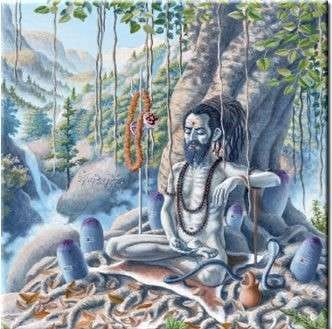
3. Pranayama (2.11.30) – Prana is air circulating within one’s body. Its restraint is Ayama. (2.11.31) Pranayama is three-fold – Uttama (Higher), Madhyama (Middle) and Adhama (Lower). Another two-fold classification of Pranayama is Sagarbha and Agarbha.
Sagarbha – Pranayama with the repetition of Om or any other Mantra
Agarbha – Pranayama without Mantra.
(2.11.32,33) – Pranayama with 12 Matra (12 seconds retention) is lower, of 24 Matras is middle and the last of 36 Matras is the higher. In the lower perspiration comes, in the middle shivering, quivering and in the higher levitation of body and bliss. The excellent among these is which causes bliss.
(2.11.34) – That is called Sunapha Yoga which is success of Sagarbha Pranayama (Sagarbha Vijaya). This is the characteristic of breath-control of a Yogi.
(Sunapha Yoga is astrological relationship of one planet, house or sign with another planet, house or sign through transit, aspect or conjunction. If there are planets except the Sun in the second house from the Moon, Sunapha Yoga is caused.
It results in self-earned property, king or ruler or his equal state, intelligence, wealth and good reputation.)
(2.11.35) – There is a Mantra called Gayatri Mantra. It is a very holy verse. Om is joined to this at the beginning and the end. In one breath, one should repeat three times Gayatri Mantra. This is called the breath-control.
(2.11.36) – Pranayama consists of three stages Rechaka, Puraka and Kumbhaka.
(2.11.37) – Rechaka is exhalation of breath, Puraka is inhalation and the state of equilibrium (retention) is Kumbhaka.
Gayatri Mantra in Sanskrit – ॐ भूर्भुवः स्वः तत्सवितुर्वरेण्यं भर्गो देवस्य धीमहि धियो नह प्रचोदायत्।
Transliteration –
Om bhur bhuvah svah tat savitur varenyam
Bhargo devasya dheemahi dhiyo yo nah prachodayat
Word by word meaning:- Om – God, Bhur – Bhuloka (physical plane), Bhuvah – Antariksha (space), Svah – Svarga (heaven), Tat – Paramatma (God), Savitur – God (Surya), Varenyam – fit to be worshipped, Bhargo – Remover of sins and ignorance, Devasya – Glory (Jnana Svaroopa; Knowledge personified), Dheemahi – we meditate, Dhiyo – Buddhi (intellect), Yo – Which; Nah – Our, Prachodayat – enlighten.
Meaning – May we meditate on God and His Glory who has created the Universe, who is fit to be worshipped, who is the remover of all sins and ignorance. May He enlighten our intellect.
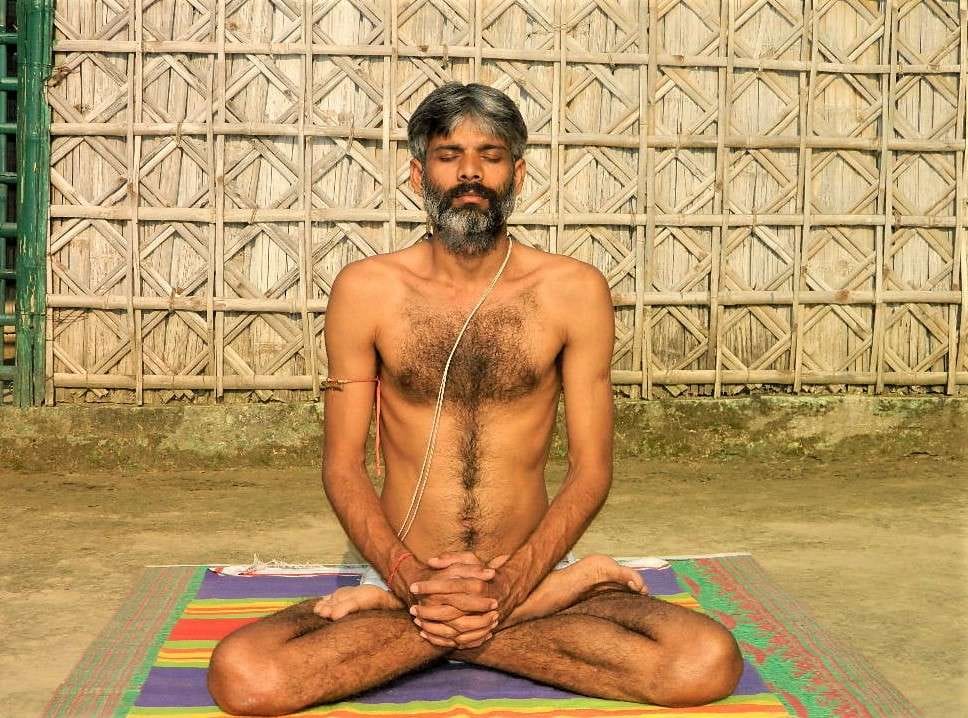
4. Pratyahara (2.11.38) – It is restraint of sense-organs from naturally going to sense objects.
5. Dharana (2.11.39) – It is concentration of mind on certain parts of body such lotus of the heart, naval, palate, forehead and such other parts.
6. Dhyana (2.11.40) – It is continuous concentration of mind on particular part of body without being undistracted by any other objects or experiences.
7. Samadhi (2.11.41) – It is state of concentration where no object stays as base but the whole mind itself becomes the object. This is the excellent instruction in Yoga.
(2.11.42) – Concentration for twelve seconds lead up to Dharana, twelve such Dharana is Dhyana and twelve such Dhyana constitute Samadhi.
8. Asana (2.11.43) – There are mainly three body postures which are the excellent among spiritual disciplines. They are Svastikasana, Padmasana and Ardhasana.
Padmasana (2.11.44) – Sitting with soles of both feet over thighs is called excellent Padmasana.
Svastikasana (2.11.45) – Sitting with soles placed in between knees and things is excellent Svastikasana.
Ardhasana (2.11.46) – Sitting with one foot on other thigh (right foot on left thigh) is excellent Ardhasana for the accomplishment of Yoga.
Prohibited circumstances for Yoga practices (2.11.47,48,49) – Yoga should not be practised at improper time, in unsuitable place, near fire, in water, on ground strewn with dried leaves, where vermins (insects) abound, dilapidated cowpen, at cremation ground, where four roads meet, too noisy place, where there are too many ant-hills, Caitya (Buddhist place of worship, shrine, burial mound), where there are many wicked men, where mosquitoes are in plenty, when body is ill or lazy and when mind is dejected.
Prescribed circumstances for Yoga practices (2.11.50,51) – With mind devoted to Him (Lord Siva, God), Yoga should be practised at secluded, auspicious, protected place, mountain cave, bank of a river, holy place, temple, house or isolated place free of worms or vermins.
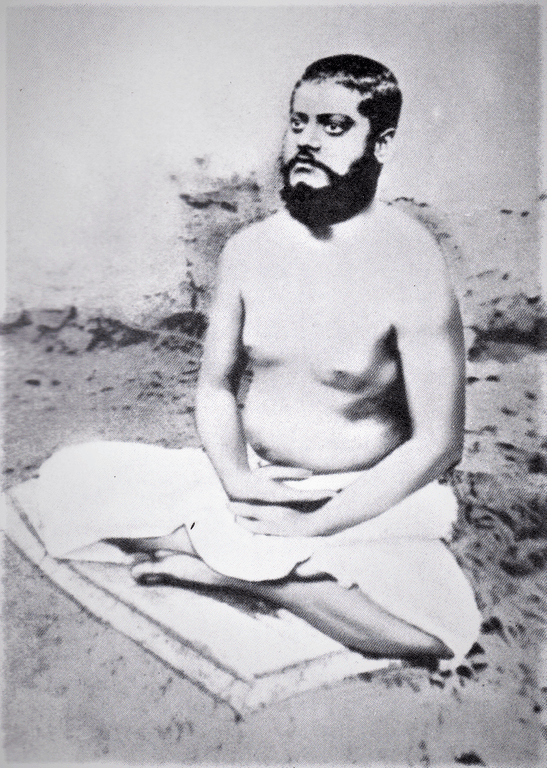
Prescribed methods of Meditation (2.11.52,53,54) – Some special forms of meditation are prescribed. To start with, a Yogi bows down to great Yogis, their disciples, God Vinayaka (Ganesha), his own Guru and God Shiva. Then –
- He begins the practice of Yoga with full concentration. He sits in any of the posture – Svastikasana, Padmasana or Ardhasnna. He keeps eyes partially open, fixes his equipoised gaze on the tip of his nose, is calm, is free from fear, illusory worries of world and meditates on God abiding in own soul.
- (2.11.55,56,57,58,59) – Imagine a 12 angul (angul means finger – angul is a unit of measurement which is breadth of a finger. 1 angul is 1.763 cm)) long mystic and extremely beautiful lotus at the tip of the tuft of hair (at crown of one’s head), Dharma (virtue) is its bulbous root, knowledge as its stalk, eight petals as divine powers, Vairagya (detachment) as its stamen and pistils. Within the pericarp contemplate a golden calyx. Within it meditate on almighty God expressed by AUM, divine, unchanging, endowed with all divine potencies. One should meditate on the great brilliance and the imperishable one.
- (2.11.60,61) – Another type of meditation is described. Contemplate an excellent lotus in the heart space. At the centre of the lotus space imagine a lustrous flame of fire as the soul. Within the lustrous flame imagine another pure flame which is the soul of soul; God. Meditate on That in the heart.
- (2.11.67) – One should meditate upon Lord Isha (Shiva) as supreme light within one’s own soul. This is Pasupati Yoga (Yoga pertaining to God Shiva). It is conducive to liberation of Pashu (Individual mind) from Pasha (bondage).
Greatness of Raja Yoga (2.11.68) – This is the path of all students of Vedanta (Upanishad). The Vedas says declare this beyond all Asramas (stages of life). This is the greatest and most secret truth which bestows absorption; oneness with me (God Shiva).
The most important disciplines; observances for success in Yoga (2.1169,70) – Brahmacharya (Celibacy), Ahimsa (Non-injury), Kshama (Forgiveness), Saucha (Cleanliness), Dama (Control of senses), Santosha (Contentment), Satya (Truthfulness) and Astikta (Faith in Vedas) etc. These are special ancillaries of religious vows. Don’t be afraid if one of the vows is lacking. It does not affect it.
Qualities of an eligible Yogi – (2.11.71……………..90) – Kurma Purana details some features of a devoted Yogi. It has been described in various following verses. Here are some lists of those features. A true Yogi is free from lust, fear, anger, identified with me, resorts to me, purified by Yoga, renounced all Karmas, accepts no gift, partakes of the alms (voluntarily given), does not hate any being, friendly and sympathetic to all, free from egoism, a devotee, has self-control, firm in resolution, dedicate mind and intellect unto God, does not afflict the world, not afflicted by the world, He who has no expectations, pure, prompt, efficient, unconcerned, devoid of troubles, renounces all undertakings, equally reacts to censure and praise, silent, content, has no fixed abode, steady mind, devoid of hopes, abandons all possessions and so on.

Worship of God Shiva in Linga (2.11.95,96,97) – In Kurma Purana Linga (a phallus structure of worship in God Shiva temple called Shiva Linga) is symbolised as form of God Shiva. Therefore, worship of Linga, meditation on Linga and devotion to Linga is equal as worship of God Shiva. A devotee worships God Shiva in the Linga, after sanctifying it duly. He may worship it in water, in the middle of fire, in the sky, in the sun or in other places. Linga may be conceived of in any jewels also and God Shiva may be worshipped. All this is one with Linga and everything is within Linga.
Lineages of Raja Yoga (2.11. 126-133) – In Kurma Purana different lineages have been explained. The great sage Sanatkumara gave the perfect knowledge to his disciple Samvarta. Samvarta imparted it to Satyavrata. The chief among Yogi Sanandana gave it to great sage Pulaha. Pulaha gave it to Gautama. Angira gave it to Bharadvaja who was learned in the Vedas. Kapila gave it to Jaigipavya and panchashikha. My father Parashara (father of Vyasa); the seer of all knowledges, received that perfect knowledge from Sanaka. Valmlki got it from Vyasa. The great Yogi Vamadeva; child of Sati and Siva imparted this knowledge to me (Vyasa) formerly. God Hari (Krishna); the son of Devaki, himself gave this excellent knowledge to Arjuna. The various lineages prove that Raja Yoga is very ancient. Here the speaker is great sage Veda Vyasa so the pronoun “me” comes for him. It talks also about transmission of the knowledge of Raja Yoga from God Krishna to Arjuna which is essentially called Gita. Hence Gita (Chapter 9) is also a treatise on Raja Yoga.
Orders of eight limbs in Kurma Purana and Yoga Sutra of Patanjali – Kurma Purana (2.11.11) enlists the eight limbs of Yoga in different sequence than eight limbs in Yoga Sutra of Patanjali. This means that some limbs come before or after in sequence in both the texts which does not make much difference as the total eight limbs are included in both the texts. Therefore, a reader should be free from any misconception about it. There are eight limbs of Raja Yoga both in Kurma Purana and Yoga Sutra of Patanjali.
Raja Yoga described by Swami Vivekananda from Kurma Purana
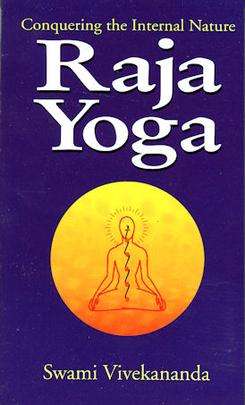
The great Swami Vivekananda writes a very genuine commentary on Yoga Sutra of Patanjali which is the first commentary on Yoga Sutra ever done. He named the commentary “Raja Yoga”. The book has two divisions. In the first he writes essays on various topics such as Prana, Psychic Prana and so on. One of those is “Raja Yoga in Brief”. In this he summarises the topics from Kurma Purana (2.11). This is a very beautiful assembling of the esoteric science. For more details about it please refer to the essay “Raja-Yoga in Brief” in Raja Yoga by Swami Vivekananda. In the end of the essay, he writes a beautiful story on patience, perseverance and determination of a Yogi. There was a great sage among Gods called Narada. One day he saw a man meditating until ants had built a huge mound round his body. He asked Narada as to where was he going. Narada answered that he was going to heaven. He requested him to ask God when he will attain freedom. Further on Narada saw another man who was wild, singing, dancing and asked Narada as to where was he going. Narada answered that he was going to heaven. He requested him to ask God when he will be free. In course of time Narada returned and met the man with anti-hills grown round. He asked Narada as to what had God said about him. Narada answered that God told him that he would attain freedom in four more births. This disappointed him as he needed to wait for four more births. Narada then met the other man. He asked if he asked his question to God. Narada said yes and pointed to a tamarind tree. He again said he will be born as many times as many leaves as there are on that tamarind tree, and then he will attain freedom. Then the man started to dance and exclaimed that he will have attain freedom after such a short time. Suddenly a divine voice came, “My child, you have freedom now.” That was the reward for his patience and perseverance as he was ready to work hard through all those births. But the first man felt four more births too long. Only perseverance like that of the man who was willing to wait aeons may bring about the highest result. Please study commentary on Yoga Sutra entitled “Raja Yoga” by Swami Vivekananda for greater clarity on the subject matter.
Raja Yoga in Yoga Sutra of Patanjali
Yoga Sutra of Patanjali is considered as an authoritative text on Raja Yoga. It was called “Raja Yoga” first by Swami Vivekananda. The text has four chapters which include many sutras. Each chapter deals with many kinds of topics such as first chapter deals with Samadhi (Deeper concentration), second chapter deals with Sadhana (Practices), third chapter deals with Vibhuti (Powers) and fourth chapter deals with Kaivalya (Liberation). Hereunder are the brief topics of the four different chapters –
- Samadhi Pada – It contains 51 Sutras which deals with different kinds of Samadhi, obstacles in meditation, five kinds of Vritti and methods of control, Ishvara, AUM and methods to experience Samadhi etc.
- Sadhana Pada – It contains 55 Sutras which deals with Kriya Yoga, the five afflictions, the methods to cease the afflictions, eight limbs and its advantages etc.
- Vibhuti Pada – It contains 56 Sutras which deals with Dharana, Dhyana, Samadhi and different kinds of Samyama on external objects and psychic powers etc.
- Kaivalya Pada – It contains 34 Sutras which deals with Dharmamegha Samadhi, Ritambhara Prajna and state of freedom (Kaivalya) of a Yogi.
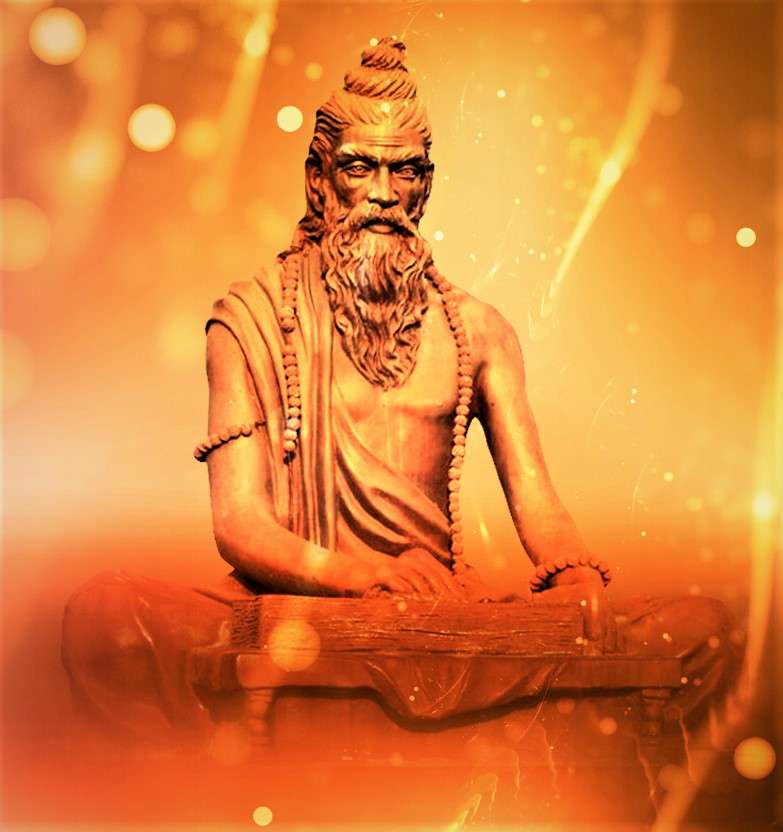
Among all these various topics, the eight limbs of Yoga in chapter second is very important which is similar to the eight limbs explained in Kurma Purana. Chapter 2, Sutra 29 of Yoga Sutra of Patanjali says – “Yama niyama asana pranayama pratyahara dharana dhyana samadhi ashtau angani”. This sutra in Sanskrit means – there are eight limbs of Yoga.
- Yama (Self-restraint) – Ahimsa (Non-injury), Satya (Truth), Asteya (Non-stealing), Brahmacharya (Celibacy) and Aparigraha (Non-possesiveness).
- Niyama (Personal observances) – Saucha (Purity), Santosha (Contentment), Tapas (Austerities), Svadhyaya (Study of Scriptures) and Ishvarapranidhana (Surrender to God)
- Asana (Posture of meditation)
- Pranayama (Restraint of breath)
- Pratyahara (Control of senses)
- Dharana (Concentration)
- Dhyana (Meditation)
- Samadhi (Super-conscious state).
Yama and Niyama are the formidable disciplines to relax the senses and purify the mind. Asanas steadies body. Pranayama fills oneself with light and helps to control, regulate and coordinate the subtle forces within the body which in turn develops the Sattva Guna. Through the regular practice of Pranayama mind becomes fit for concentration. Pratyahara curbs the senses and turns them inward. Dharana concentrates the mind on the object of practice. Dharana develops into Dhyana and Dhyana into Samadhi. There is a hair like distinction between Dharana, Dhyana and Samadhi. At the highest state of Samadhi, a Yogi experiences Kaivalya (Nirvikalpa Samadhi – transcendental state). Now ignorance being destroyed he enjoys the bliss of his own true nature and independence. This is the goal of human life.
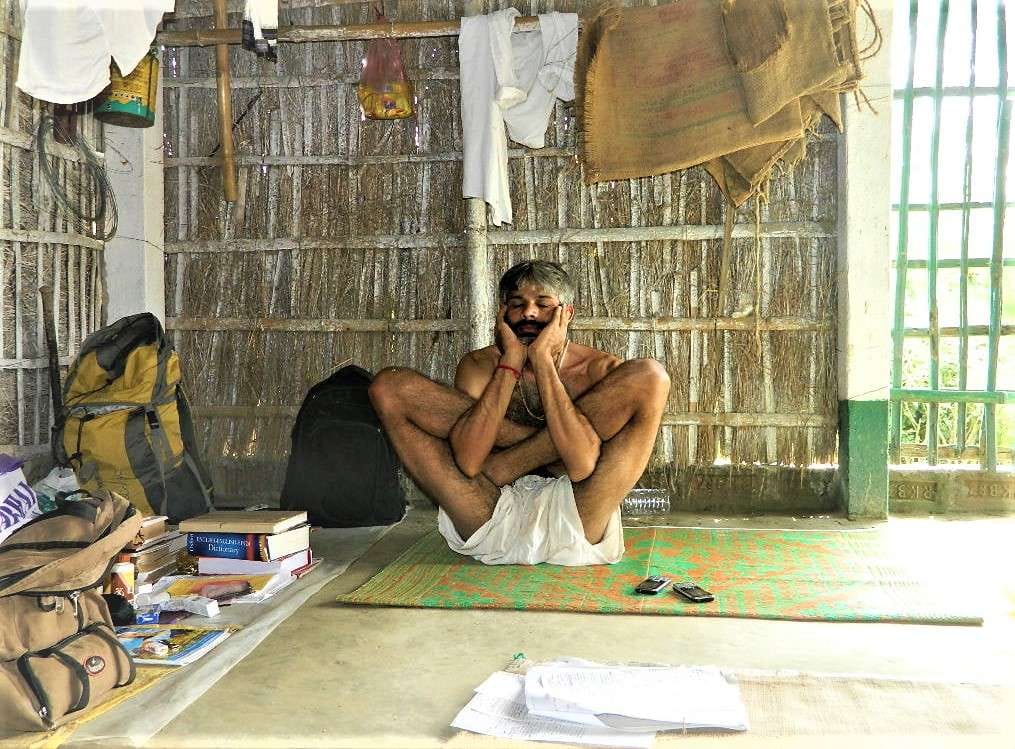
Prescribed forms of meditation in Yoga Sutra of Patanjali – Yoga Sutra of Patanjali prescribes various methods of concentration in Chapter 1, Sutra 23 to 39. These methods are –
- Devotion and worship of God
- AUM – Chanting with meaning and feelings
- Retention of breath
- Concentration on certain special parts of body like tip of nose
- Meditation on any form of effulgent light
- Meditation on any enlightened person
- Meditation on any knowledge or experience received in dream or sleep
- Meditation on anything good which appeals to an individual
Essence and Summary of Raja Yoga – Raja Yoga can be summarised as a unique blend of moral disciplines and concentration of mind. The proper observances of morals like Satya, Ahimsa, Santosha and so on coupled with regular practice of mental concentration leads to the higher states of evolution. The mind through various experiences of life creates modifications like waves. Through concentration we highlight one particular wave. As this chosen wave becomes stronger, the other waves become dormant. Gradually the only chosen wave continues. In the end that one chosen wave is also left and at this point the mind stays in its true nature without any wave – still, calm and free from any base of experiences supplied by senses. This is how Raja Yoga illumines the individual soul. Consequently, the aspirant experiences his own true nature. The path is broader and open. A courageous one ascends on this path and attains the great goal of human life.
Caution about morality – The moral ideas prescribed in Raja Yoga under Yama and Niyama are universal in nature. Apart from that there are other moral disciplines and standards which are considered as morals at one place whereas non-morals at other places. Therefore, an aspirant of Raja Yoga needs to look into the moral standards properly before he takes it into practical account. We should decide for ourselves and not for others regarding what is moral for us. Our personal criteria of morality should be confined to us and we should reflect this in our approach towards others. The gradual evolution is the sign of practising morality.
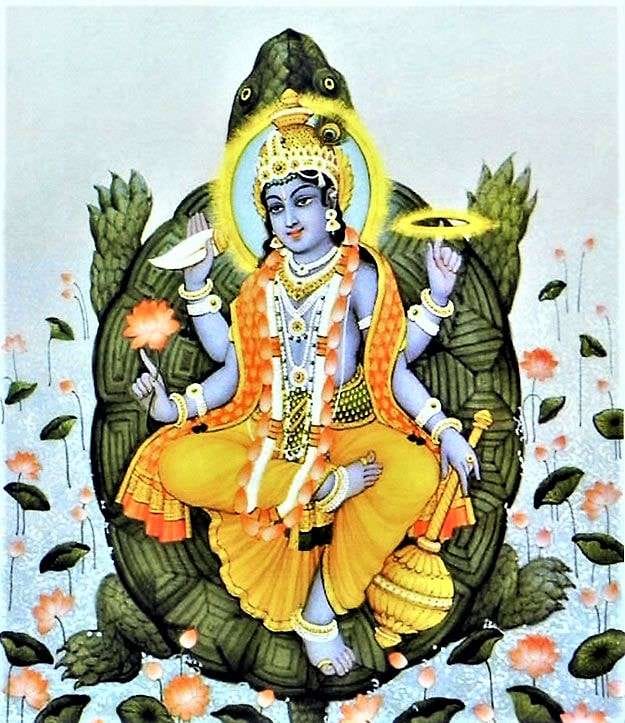
Concept of Personal God in Raja Yoga – Raja Yoga in Kurma Purana discusses a personal God “Shiva”. This does not mean that only Shiva should be the personal God for all. This does also not mean that one must believe in a personal God to follow Raja Yoga. The personal God has many names and forms. Each name and form represent the same ultimate God. It is the personal interest of the individual that he may choose his personal God and relate with Him to follow the path of Raja Yoga. In Yoga Sutra of Patanjali, God is described as a special being with rare specialities Who is represented by AUM. The idea herein appears to be more universal in nature however, it is intellectually incomprehensible to grasp. It is the natural inner faith of an individual which guides one regarding belief in God in anyway.
Raja Yoga for non-believers in God – It is not at all necessary that one must believe in a personal God to follow Raja Yoga. It is the very beauty of Raja Yoga that even an utter non-believer in God can follow it. What is more important here is the concept of Yama, Niyama, moral standards and so on. One simple discipline for example waking up early in the morning for meditation or eating every day on specific time, if rightly maintained develops so much of inner powers that other experiences of deeper dimensions begin to unfold naturally. Therefore, Raja Yoga intends that an aspirant should enter into this field by accepting some disciplines prescribed. Rest other things follow on their own including the concept of God, personal God, various forms of God, meditation and so on.
Raja Yoga for all – Raja Yoga is a special branch of Yoga which embraces all. It does not provide any orthodox system or ritual which might seem unacceptable to some people from other culture or background. It is a royal and much wider road that entire humanity can walk on. The concept is universal. The steps provided are logical and accessible to anyone in the world. It does not make one follow any established faith with more rigid ideologies. Therefore, Raja Yoga is Yoga for all.
Conclusion – The Kurma Purana was written long time ago therefore some ideas need to be viewed wisely. There are descriptions of places of practices like river, anthills, cave and so on which mostly relate to Indian geography. People living in different geographical conditions should relate to them according to their places and circumstances. The simple idea is that the place of practice should be clean, peaceful, with fresh air, pure, serene, divine and so on. Furthermore, the chanting of Gayatri Mantra is the prescription which should not be changed or altered. Mantras are divine syllable arranged with extreme divine potency. Therefore, Mantras need to be taken as final. Yoga Sutra of Patanjali does not prescribe any such mantra but it talks about AUM to represent God. AUM is also used as Mantra. Anyone in any part of the world can embrace this beautiful branch of Yoga as it has universal application. Perhaps, that’s why Swami Vivekananda preached Raja Yoga internationally and made the first commentary in English on Yoga Sutra of Patanjali entitled “Raja Yoga”.
With Love and Gratefulness (Founder Rohit Kumar)
Source – Kurma Purana, Gita, Ancient texts of Yoga, words of Swami Vivekananda and personal study.
Hari Om Tat Sat!

